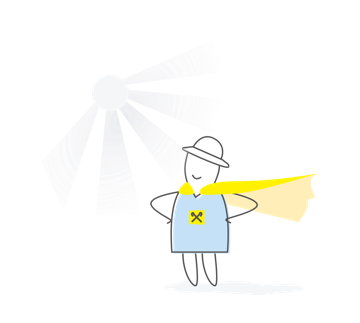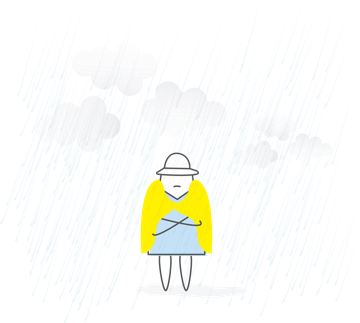What you need to know to get a grant
Olha Malikhatko, an expert of the International Labour Organization in “Generate a business idea”, “Start your business” programs, certified business coach, told about the nuances of writing a grant application at “Business4Women” forum.
Preparatory stage
In order to get project financing on a gratuitous basis, you have to fill an application to a donor, that is, describe what you want to do and the resources you will need. This looks like a business plan, however, with many differences.
- Idea is what’s most important.
It’s a common mistake to create an idea alone, in private, and start writing an application yourself. An idea should be based on a need. Please determine what problem you are solving and what the outcome will be when the idea is implemented. Get together a focus group, have a brainstorming session, consult domain specialists, as well as those directly benefiting from your project. When thinking of problem resolution, write an implementation plan and focus on resources.
- Choose the right donor.
It’s a common mistake to send a good idea to the wrong donor. Many donors grant financial technical assistance (that’s the same as monetary grants), while not each of them supports organizational capacity (allows spending funds on technology, equipment purchase). Some prefer soft projects (such as training workshops, conferences, etc.) rather than hard projects (such as construction, repair or equipment for real business), while others on the contrary. Some allocate grants for studies and travel, others provide expert/advisory assistance. Grants are provided not only by international organizations, but also by private Ukrainian and foreign funds and state entities.
Where to find a donor?
- https://business.diia.gov.ua https://kickyour.tech https://platforma-msb.org/
- Official websites of funds, embassies, state institutions
- Special portals https://gurt.org.ua/, https://www.prostir.ua/
1. Meet the donor beforehand
Malikhatko advises the “healthy lobbying” of your project: attend training sessions, information days held by donors, write emails with questions regarding your application, so that you are remembered. Apart from that, information on the donor’s “past” can be helpful. “Find the information on the mission, priorities, strategy, list of organizations financed (names, short summary of an idea, amounts) on the official website”, the expert advises.
2. Prepare your documents
Prepare information about yourself in English beforehand, such as:
- Your grant history (if you have none for now, write about your experience, partners, experts in your team);
- Organization’s or company’s mission, goals, strategy;
- Have all the documents (the charter, references, extract from the United Register) translated into English.
Note: some major donors require pre-registration of the would-be competition participants in their online system, and it takes time (e.g., the European Commission has PADOR system https://ec.europa.eu/europeaid/etraining/pador/en/index.html_en, the US Department of State – SAM.gov system where DUNS, NCAGE codes must be received, and a cover letter from the organization’s CEO must be sent).
3. Prepare a team and partners
You should create a team BEFORE writing a project: project manager, mastermind (domain specialist), accountant, technical assistant (preparation of documents), translator, editor (to proofread the texts). These people will implement the project in case of a success, and they should also take part in its planning. “It’s a common mistake not to engage a company with, but try to do everything yourself, in order not to share money”, Malikhatko notes. Trilateral partnership (government, business and community) is a common requirement. Find partners 1-3-6 months in advance and prepare the Letter of intent, Memorandum of partnership. A life hack: some donors offer tour-de-partner, partner bases.
Writing an application
- Focus on title and content
A long, bureaucratic title makes the first impressions from an application worse. Malikhatko, just like other experts, advises a shorter project title of 5-7-10 words. “Please bear in mind that all the products will later contain the “paragraph”, with which you named your project”, she notes. Sometimes donors accept a Concept Note (a short description on 1-5 pages) at the first stage of the competition, and only if it’s approved, then you may file a full application or Proposal (12-60 and more pages).
- Attention to the structure
Each donor has its special form of application, however, the structural description elements are the same. You should work over the Summary of the project thoroughly. That is usually a 250-300-word summary of the key information on the project. The expert advises that you should draft a project summary after the application in its entirety has been written.
When describing a problem, do not copy the information from the internet, do not engage in empty talk – provide the figures from official sources, statistics, analysis, Your project priorities must be closely connected with those of your donor.
Do not confuse your concept’s target audience (those whom the issue solved in the application directly concerns) and beneficiaries (those who will ultimately benefit from its implementation.
Write up to 5 tasks for each goal, which must be always worded based on SMART methodology (what, where, when, who is it for?) Recommendation: write on the sheets or flipchart with your team first. The goal must be connected with the donor and your charter, be clear and concise.
When writing on the Activities – project activity, prepare the calendar implementation plan. Common mistakes are unfeasible implementation deadlines, overlapping of actions and the lack of logic of their implementation.
Think about the expected results (short-term and long-term ones), qualitative and quantitative indicators of their achievement. Results are often confused. Three types of results exist: Outputs (at the time of the project completion), Outcomes (that will be achieved at the end of the project) and Impact – the impact that can be observed in 3-5 years.
Remember to stipulate the methods of result evaluation: these can be surveys, interviews, when you identify the change of skills/behavior, knowledge, attitude.
You will definitely be asked about the resources or your own contribution to the project – it would be a mistake to leave it blank. Your own contribution can be material or financial. “The resources are the project team (surnames and names, positions, qualifications, experience, functions within the project), third parties engaged (surnames and names, positions, qualifications, experience, functions within the project), the equipment and its specifications (if such need exists), premises, etc.”, Malikhatko notes.
Risks are always there, so you should show the donor you understand and can foresee them. Potential external (including force majeur, foreign currency fluctuations, quarantine, etc.) and internal risks (organizational ones, like equipment breakdown, electricity failure at a festival and human errors – someone did not reach the venue, someone could not take part). The methods of their mitigation should be specified (generator for electricity failure, alternative change if the participants did not reach the venue).
Information support of the project is not about extra costs, it’s about the necessity to drive attention to the project and introduce the donor. Think of your idea visualization, communication plan, cooperation with mass media.
The issue of project sustainability should not be missed. When the grant funds are over, there is a possibility of other donors’, sponsors’ support, social entrepreneurship, raising community funds, etc.
Budget is the project’s second “wing”, without which it will now fly up. It’s an error to have an inflated or a trifling budget. Administrative costs usually account for 7-15 % (the manager’s, accountant’s pay, office costs), program/project costs proper account for no less than 70% (everything connected with event organization) and audit – up to 10% depending on project complexity. All figures must be explained in as much detail as possible, to make it clear where they came from.
- Write with no errors
- “After you write an application in your native language, proofread it attentively and make it shorter. Everything should be clear, concise and written in simple sentences. An extremely long application with “lyrical digressions”, with no logic, or inundated with terms and bookish words will hardly be supported”, the expert shares her opinion. In order to check yourself, let somebody else read your application: let it be a teenager, an older woman from a nearby town, an expert. After that, after all issues have been dwelt upon, get it translated. All the donors at all info days call upon learning English or hiring professional translators instead of using machine translations.
Check stage at submission
- Assess yourself
After filling the application, Olha Malikhatko proposes to imagine that you are an expert and evaluate the application based on the following criteria:
- Relevance
- Correspondence to the project competition priorities and goals, as well as the target region’s issues. How clearly defined and strategically chosen are the project participants (ultimate beneficiaries, target groups)?
- How clearly are their needs described and how your idea matches them?
- Is there “added value” in the project, for example, aimed at environmental protection, promotion of gender equality and equal opportunities, or, perhaps, it offers innovative approaches and best practices in the proposed area?
- How logical and consistent is the project structure? In particular, does it show analytical conclusions regarding the problem, does it accommodate external drivers and stakeholders’ opinion? Financial and functional capabilities
- Project efficiency and feasibility
- Sustainability
- Life hack: you can read project assessment criteria on the donor’s website or in the applicant guidelines.
- Check technical details
Before submitting the application, check again:
- Did you attach all documents with annexes (documents sent by a different letter are treated as a new application assigned a new number);
- Are emails and phone numbers correct?
- Budget (set out according to the guidelines);
- Is everything signed, didn’t you forget to put the seals?
- Is everything in the format specified by the donor (PDF, Word, Excel).
- In order to remember all that, use the donor’s check list or use your own one.
The final warning: send you application using the method specified by the donor: online-platform via own account, email or courier, mail, or perhaps, the email application should be followed by paper-based documents.
Pay attention to the online platform’s technical features, there is a high risk of incorrect timing when transferring a finished application to online form.
* “Business4Women” business forum is organized with the support of the European Bank for Reconstruction and Development (EBRD) as part of #EU4Business EU initiative.















